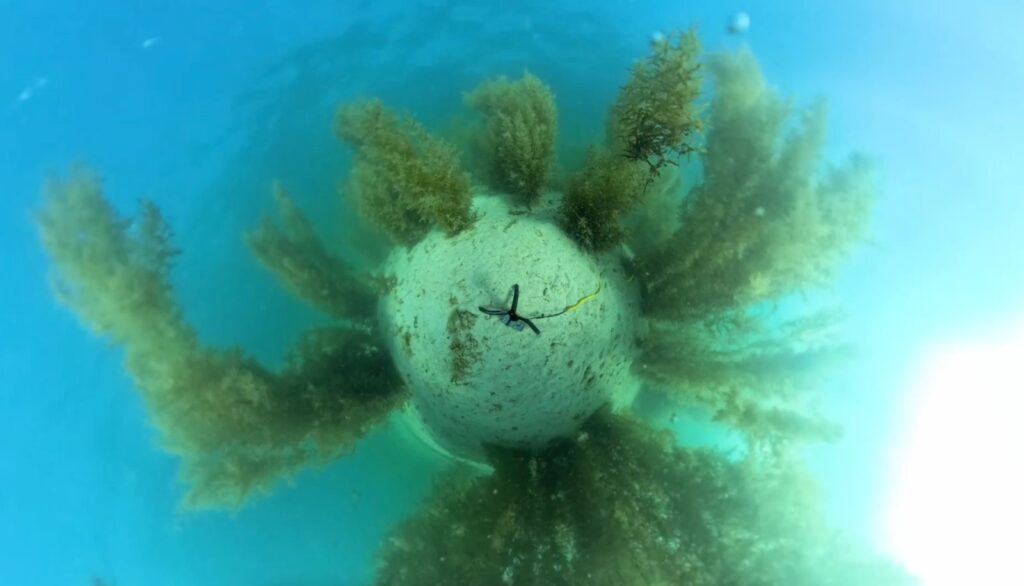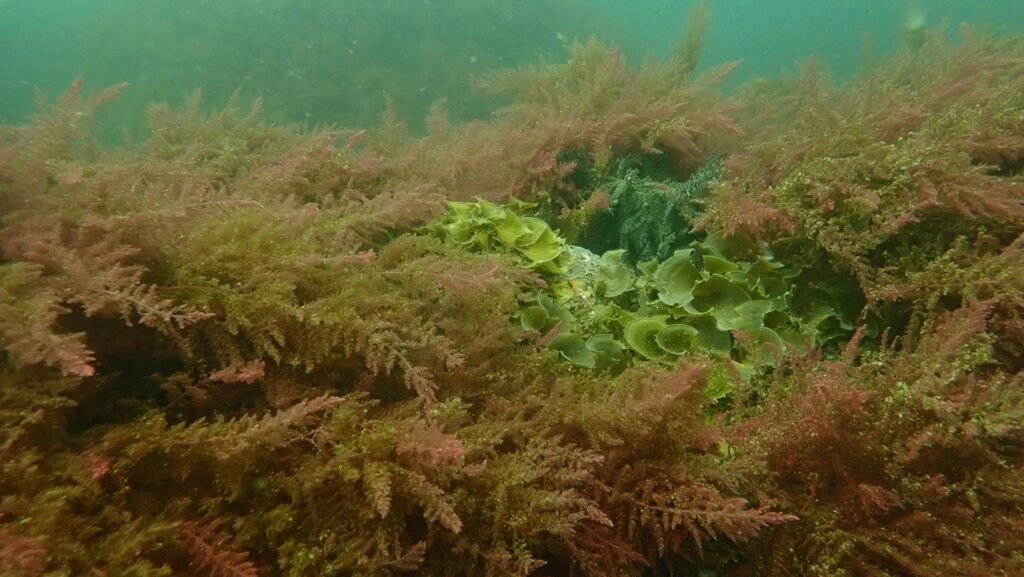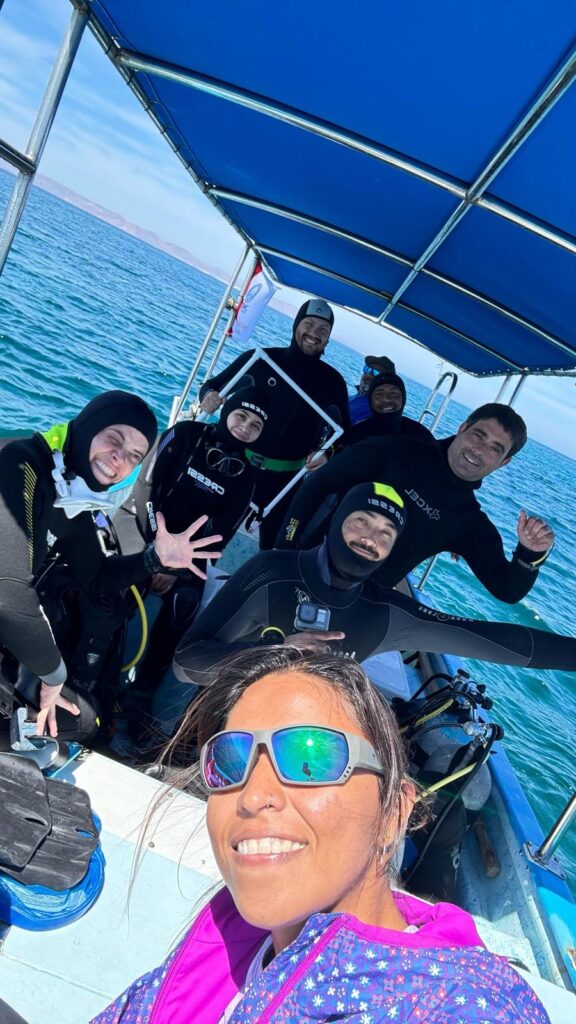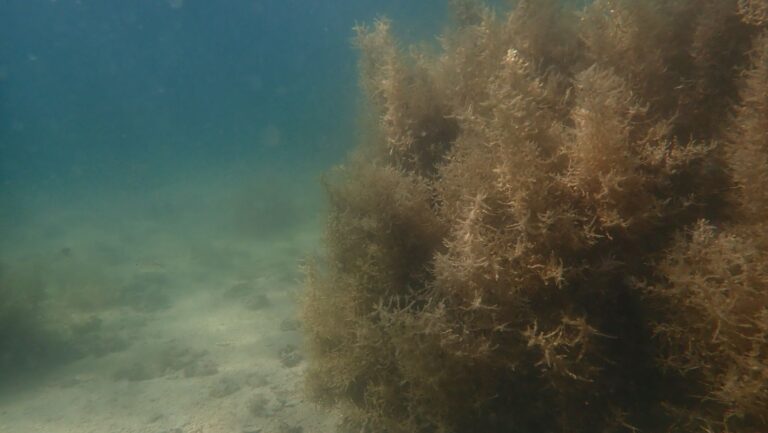A team of scientists from Mexico, Europe, and the United States is traveling across the Gulf of California with a new conservation tool: artificial intelligence capable of processing hundreds of hours of underwater video and transforming the data into key evidence about the critical state of the reefs.

An international team of scientists connects via Zoom from a ship on the open sea. Sunburned faces and voices energized by fieldwork—along with the excitement of innovation—appear on the screen. For the first time, artificial intelligence is being incorporated into ecological monitoring of the Sea of Cortez, one of the world’s richest yet most threatened marine ecosystems.
“This year, we’re updating a time series over 20 years old with novel AI technologies,” explains Fabio Favoreto, a researcher at the Scripps Institution of Oceanography and one of the expedition leaders. “It’s like having Einstein working for you… or almost. Because Einstein didn’t know everything, but this technology comes close.”
The Gulf of California—a 1,200-kilometer sea dubbed “the world’s aquarium” by Jacques Cousteau—faces dual pressures. One is the burden of historical overfishing; the other is the visible impacts of climate change, such as a 1.5 to 2-degree Celsius rise in water temperatures since 1982 and the gradual disappearance of heat-sensitive species. “Unfortunately, many of the transects we’re conducting look increasingly empty,” says Favoreto. Sargassum, vital as a nursery for juveniles, has declined in biomass in several areas. While Cabo Pulmo—a National Marine Park in Baja California Sur and the only coral reef in the Gulf—remains a success story, fish biomass across the rest of the Gulf is at a historic low. Faced with this urgency, science must adapt—not just to monitor, but to do it better, faster, and on a larger scale.

This is where artificial intelligence comes in. In this expedition, researchers are using 360-degree video cameras to capture thousands of hours of underwater footage. These are processed by computer vision systems trained to identify species, count individuals, measure sizes, and calculate biomass. The key device, an Nvidia Jetson Nano GPU the size of a mobile phone, will eventually become the onboard “little brain.” “It’s like having Einstein working for you,” Favoreto laughs. Not now—he clarifies—but once they return to land, feed the AI models with the expedition’s data and train algorithms to read the reef like an expert scientist. “Before, it took us months to review videos manually. Now, with AI, we process data almost in real-time. That lets us focus on forming hypotheses and deeply analyzing ecosystem changes.”

The traditional method required expert divers to count fish underwater, estimate their size, and record everything on waterproof tablets—a meticulous but human process prone to bias and error. The new approach involves recording 50-meter transects for fish and 30-meter for invertebrates, at depths of 5 and 20 meters, across over 60 sites between La Paz and Tiburón Island. The footage will be analyzed by machine learning models that recognize species and learn to separate them from the seabed, detect patterns, and measure population changes with unprecedented accuracy.
The team has also begun using aerial drones and satellite image analysis to monitor floating sargassum patches, anticipating their early decline due to warming. This tech arsenal aims to build a robust database to support evidence-based conservation decisions, like expanding marine protected areas or restoring critical habitats.

In the early days of monitoring, the expedition’s findings have confirmed scientists’ worst fears: many reefs in the Gulf of California appear to be at their lowest biomass levels since records began nearly three decades ago. Fabio Favoreto sums it up: “We don’t see sharks anymore, we don’t see many predators… a lot of the transects we’re doing look emptier and emptier.” The team recorded surface temperatures up to 24°C in April, which was unusually high for the season. Since 1982, the regional average has risen by 1.5°C, reaching 2°C in some zones, with a worrying rise in marine heatwaves, some lasting up to a month, capable of killing or displacing entire organisms.

One of the most visible impacts is the accelerated disappearance of sargassum forests—key spawning and shelter habitats for many marine species. Two forests monitored in 1999 could no longer be found, and in other areas, the algae are detaching earlier than usual due to premature warming. In addition, an invasive benthic diatom (microscopic algae that attach to underwater surfaces) has started covering entire reefs, displacing other species and affecting the diet of herbivorous fish. These signs point to a profound transformation of the ecosystem, driven by the combined effects of overfishing and climate change.
Fabio envisions a near future where a network of bright buoys equipped with cameras and acoustic sensors constantly monitors marine reserves—as if Iron Man’s “Jarvis” were watching over the Gulf 24/7. “It’s a paradigm shift. We’re moving toward a model where any citizen with a GoPro underwater can contribute to marine science without specialized training,” he says.

But technology, he warns, is not an end in itself. “It’s useless to have data if it doesn’t reach coastal communities, if it doesn’t strengthen their ability to decide, to protect their future,” he says. Because behind every lost fish and every degraded reef are human stories of survival, fishing, and culture. The Gulf of California is not just a stunning ecosystem—it’s home to hundreds of communities that depend on its resilience.
Despite the bad news—declining biomass, vanishing species—his enthusiasm doesn’t wane. “The Gulf is still fighting,” he says. “We still see whales, sardines, bioluminescence at night. There’s still a unique sea out there that deserves to be protected.” If AI lives up to its promise, perhaps the future will have a new guardian: a digital Einstein, diving for us to save the ocean.
Celsius Talks es una plataforma de comunicación científica. El contenido en texto publicado en esta plataforma puede ser republicado de forma gratuita, siempre que se otorgue el crédito correspondiente con la siguiente mención: Publicado originalmente en Celsius Talks. Las fotografías incluidas en los reportajes solo pueden ser reproducidas en el contexto del mismo y con el debido crédito al autor de la imagen. Cualquier otro uso requiere autorización expresa.


